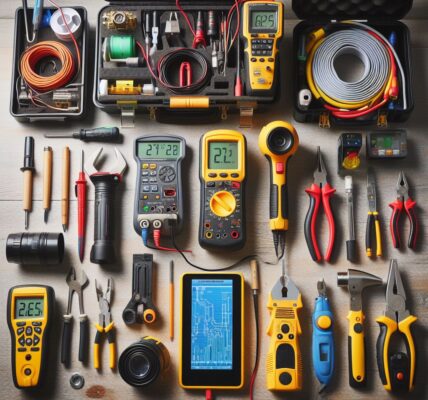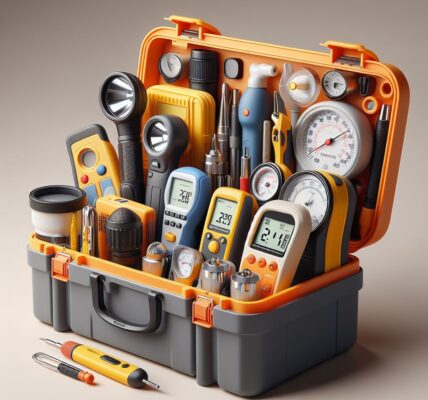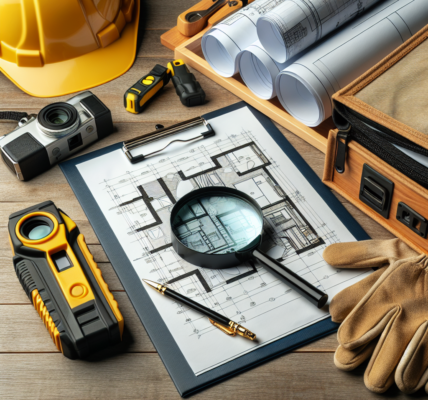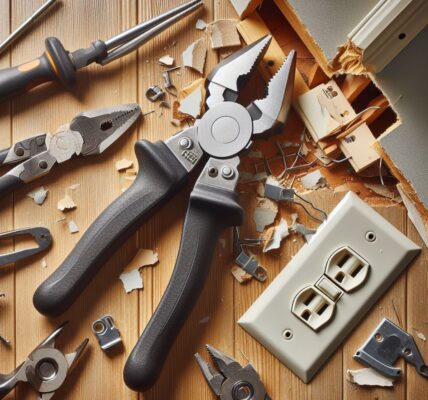Utilizing ladders for home inspection is crucial in order to safely access and assess different areas of a property. Ladders provide the necessary elevation needed to examine roofs, gutters, windows, chimneys, and other inaccessible parts of a house. With the ability to scale new heights, inspectors can thoroughly evaluate the condition and safety of a home, ensuring that potential issues are identified and addressed promptly.
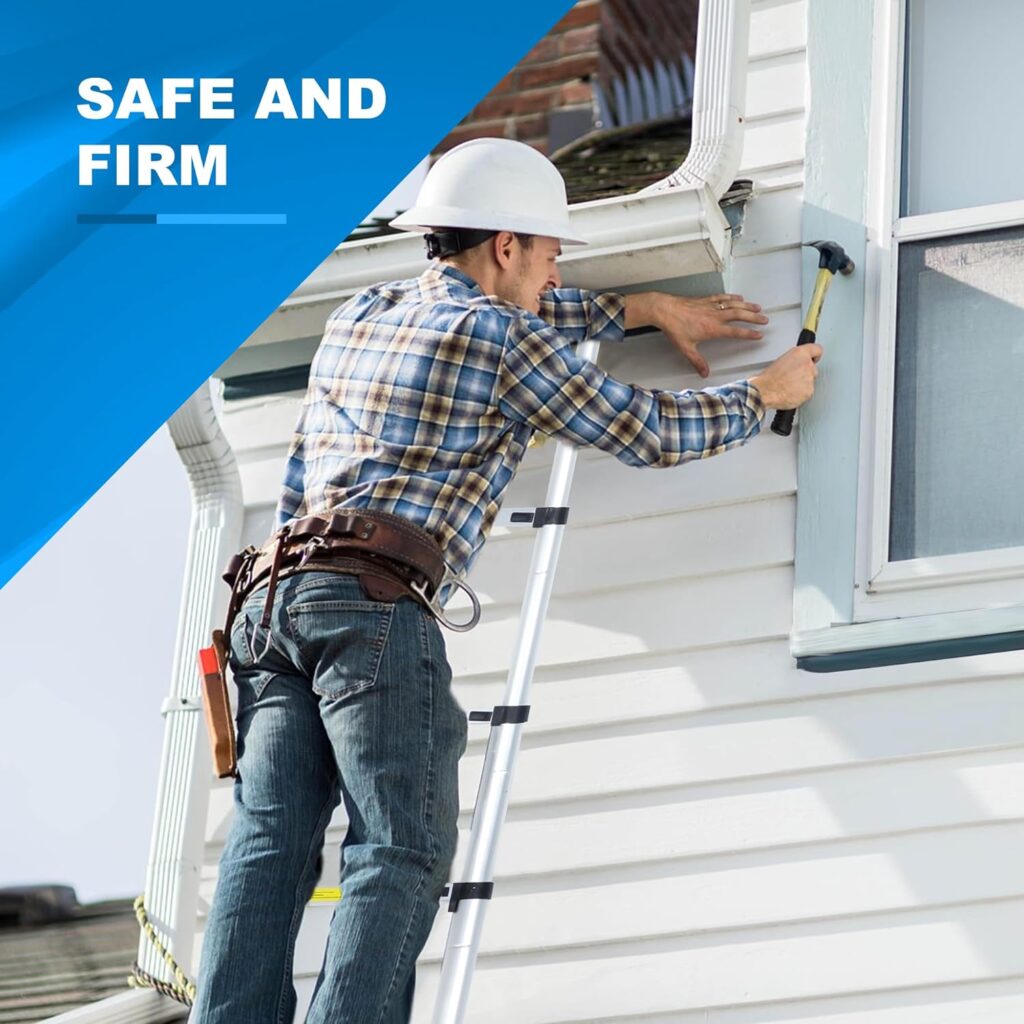
Safety Measures to Consider When Using Ladders for Home Inspection
Home inspections are a crucial part of maintaining the safety and integrity of our living spaces. From checking electrical systems to examining the structural stability of a house, home inspectors play an invaluable role in ensuring that properties are safe and well-maintained. To carry out their duties effectively, home inspectors often rely on ladders to access different areas of a property.
However, it is important to remember that working at heights can pose significant risks if proper safety measures are not followed. In this article, we will discuss some essential safety precautions that home inspectors should consider when using ladders during their inspections.
Firstly, it is imperative to choose the right ladder for the task at hand. Ladders come in various types such as extension ladders, step ladders, and platform ladders – each designed for specific purposes. Assessing the height and nature of your inspection work will help you determine which ladder type is most suitable. Additionally, ensure that your ladder has been properly inspected and maintained before use; check for any damage or defects that may compromise its stability.
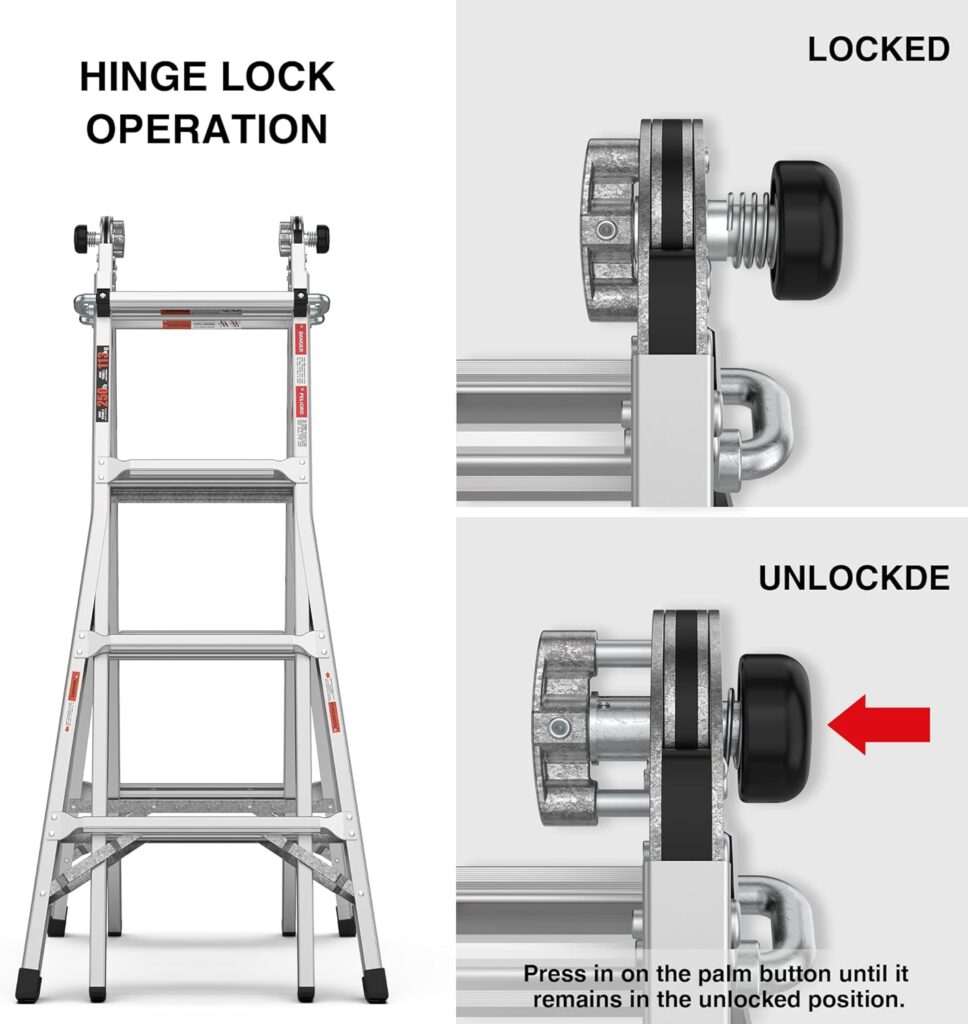
When setting up your ladder, always make sure it is placed on stable ground or flooring. Uneven surfaces or slippery floors increase the risk of accidents while ascending or descending from heights. If necessary, use leveling devices like leg levelers or wedge pads to stabilize your ladder further.
Another crucial aspect is securing the top and bottom ends of your ladder appropriately. Ensure that both ends have non-slip feet or rubber grips attached securely to prevent any accidental movement during use. Additionally, fastening the top end against a sturdy surface like a wall can provide added stability.
Maintaining three points of contact with your ladder throughout its use is essential in preventing falls or slips. Always keep both hands free by utilizing tool belts or harnesses specifically designed for climbing activities rather than carrying tools or equipment in your hands. This ensures that you can maintain a firm grip on the ladder while working.
Furthermore, be mindful of any obstructions near the ladder’s setup area. Clearing away debris or objects that may interfere with climbing and descending paths is essential for safe access. Similarly, make sure there are no overhead hazards like low-hanging branches or power lines that could potentially cause accidents.
Additionally, it is crucial to consider weather conditions when using ladders outdoors. Rain, wind, or snow can significantly affect ladder stability and increase the risk of accidents. Avoid using ladders during adverse weather conditions unless absolutely necessary and take additional precautions such as securing the ladder against strong gusts of wind.
Lastly, always prioritize personal protective equipment (PPE) when conducting home inspections involving ladders. Wearing proper headgear like helmets protects against head injuries caused by falls or falling objects. Additionally, sturdy footwear with non-slip soles offers increased traction on rungs and floors to prevent slips.
In conclusion, safety should be the utmost priority when utilizing ladders for home inspections. By choosing the right ladder type, ensuring its stability through proper setup and maintenance, maintaining three points of contact while climbing, considering environmental factors and potential hazards nearby, and wearing appropriate PPE – home inspectors can carry out their duties efficiently while minimizing risks associated with working at heights. Remember: scaling new heights requires adequate preparation to ensure everyone involved returns safely to ground level.
Different Types of Ladders for Efficient and Effective Home Inspections
When it comes to home inspections, ladders are an essential tool for reaching heights and accessing areas that would otherwise be inaccessible. There are several different types of ladders available on the market, each with its own unique advantages and disadvantages. Choosing the right ladder for your specific needs can make a significant difference in the efficiency and effectiveness of your home inspections.
One common type of ladder used in home inspections is the extension ladder. These ladders are characterized by their extendable design, which allows them to reach greater heights than other types of ladders. Extension ladders typically have two sections that slide against each other, allowing for easy adjustment to varying heights. They also often come equipped with stabilizer bars at the base for added stability.
Another type of ladder commonly utilized in home inspections is the step ladder. Step ladders are self-supporting and do not require leaning against a wall or structure for stability. They feature a hinged design that allows them to be set up in an open position, resembling an inverted “V” shape when viewed from the side. Step ladders usually have a platform at the top step, providing a stable surface for standing while inspecting hard-to-reach areas.
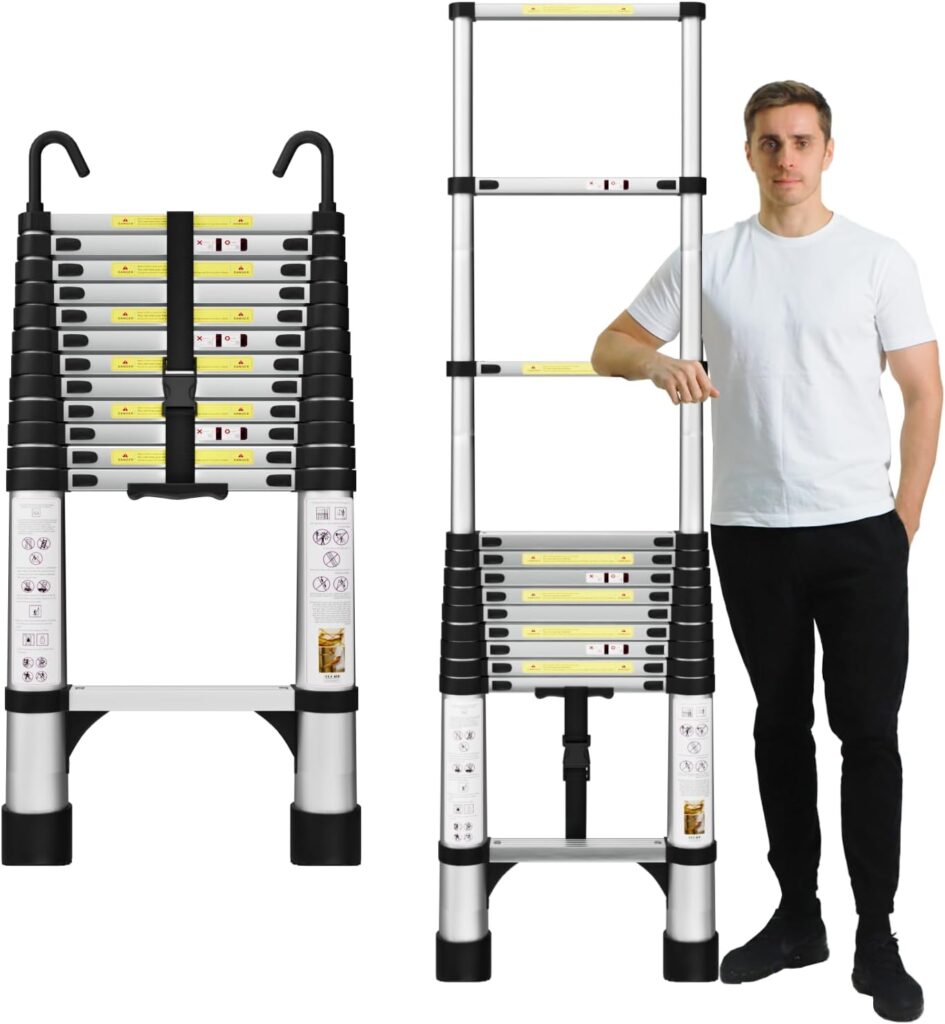
For certain situations where maneuverability is crucial, such as inspecting tight spaces or navigating uneven terrain, platform stepladders can be highly advantageous. These specialized ladders combine elements of both step ladders and scaffolding systems by incorporating larger platforms at various levels along their height range. The large platforms provide more workspace and stability compared to traditional step ladders while still maintaining portability.
In addition to extension and step ladders, there are also specialty ladders designed specifically for unique inspection requirements like attic access or roof inspection tasks. Attic stairs or pull-down attic access ladders offer convenient solutions for reaching hidden attic spaces without taking up much floor space when not in use.
When selecting a ladder for home inspections, it is crucial to consider several factors. First and foremost, the ladder should be appropriate for the height you need to reach. Extension ladders are excellent for reaching high areas like rooflines, while step ladders are more suitable for tasks at lower heights.
Weight capacity is another essential consideration. Ensure that the ladder can safely support your weight as well as any equipment or tools you may need to carry during inspections. Additionally, stability is of utmost importance. Look for features such as non-slip feet and stabilizer bars to prevent accidents caused by ladder shifting or tipping over.
Portability and ease of set-up should not be overlooked either since efficient home inspections require being able to move quickly between different locations without hassle. Choose a ladder that is lightweight yet sturdy, with easy-to-use locking mechanisms that allow for rapid adjustment.
In conclusion, choosing the right type of ladder plays a significant role in conducting efficient and effective home inspections. Extension ladders provide versatility in reaching greater heights, while step ladders offer self-supporting stability. Specialty ladders cater specifically to unique inspection needs like attic access or roof inspection tasks. By considering factors such as height requirements, weight capacity, stability features, portability, and ease of setup when selecting a ladder, inspectors can ensure they have the right tool for scaling new heights during their inspections – ultimately leading to better results in assessing the condition of homes with accuracy and precision.
Tips and Techniques for Properly Positioning Ladders during Home Inspections
Home inspections are an essential part of maintaining a property’s integrity and safety. Whether you are a homeowner or a professional inspector, understanding the proper techniques for positioning ladders during these inspections is crucial. The use of ladders allows inspectors to access areas that would otherwise be difficult or impossible to reach, ensuring a thorough examination of the entire property.
First and foremost, it is important to choose the right ladder for the job. There are various types of ladders available, such as extension ladders, step ladders, and platform stepladders. Each type has its own advantages and limitations based on the specific needs of your inspection. For instance, if you need to access high areas like roofs or tall ceilings, an extension ladder may be your best option due to its adjustable height capabilities.
Once you have selected the appropriate ladder for your home inspection task at hand, properly positioning it becomes paramount. One key aspect to consider is stability – ensure that your ladder is on stable ground before climbing up. Uneven surfaces or slippery areas should be avoided at all costs as they pose serious risks during any inspection.
Another critical consideration when positioning your ladder is ensuring proper angle placement against structures like walls or roofs. A general rule of thumb suggests placing the base of an extension ladder one foot away from the wall for every four feet in vertical height achieved by extending it upwardly (4:1 ratio). This angle provides optimal stability while minimizing potential accidents.
During roof inspections specifically, extra precautions must be taken given their elevated nature and incline angles which can make them inherently dangerous environments without proper preparation beforehand.
One technique commonly employed by professionals involves using roof brackets to secure extensions onto rooftops providing increased stability throughout inspections processes saving time and preventing accidents due poor footing conditions which may exist at certain points along roofs’ perimeters.
Furthermore, another effective way to enhance ladder stability is through the use of ladder stabilizers. These attachments can be easily fitted onto the top rungs of a ladder and provide an extended base width, increasing lateral support and preventing any potential wobbling or tipping during use.
Inspectors should also keep in mind that ladders have weight limitations. Before using a ladder, it is crucial to determine its maximum load capacity and ensure that it will safely accommodate both your body weight and any equipment you plan on bringing along during inspections.
In addition to proper positioning and stability, practicing safe climbing techniques while on a ladder is equally important. Always maintain three points of contact – two feet and one hand or two hands and one foot – when ascending or descending a ladder. This ensures balance throughout the process, reducing the risk of slips or falls.
Moreover, never lean too far outside the rails of your ladder; instead, reposition it as needed to access different areas more comfortably. Leaning excessively increases the likelihood of losing balance or tipping over entirely.
Finally, regularly inspecting your ladders for any signs of wear or damage is essential for ensuring their longevity and safety during home inspections. Regularly check for loose screws or bolts, damaged rungs or rails, missing rubber feet, or any other visible defects that may compromise your ladder’s integrity.
In conclusion,taking proper care in selecting appropriate ladders,safely positioning them,stabilizing if necessary,and employing sound climbing techniques are all vital components in ensuring efficient,effective home inspections.While these tips might seem straightforward,the consequences associated with neglecting them could result in accidents,injuries,damage,beyond what was initially being inspected.Prioritizing safety cannot be emphasized enough when working at heights.Remember,the goal is not only to get the job done but also return safely afterwards.Utilizing ladders effectively provides inspectors with opportunities to scale new heights while maintaining optimal security standards
The Importance of Regular Maintenance and Inspection of Ladders Used in Home Inspections
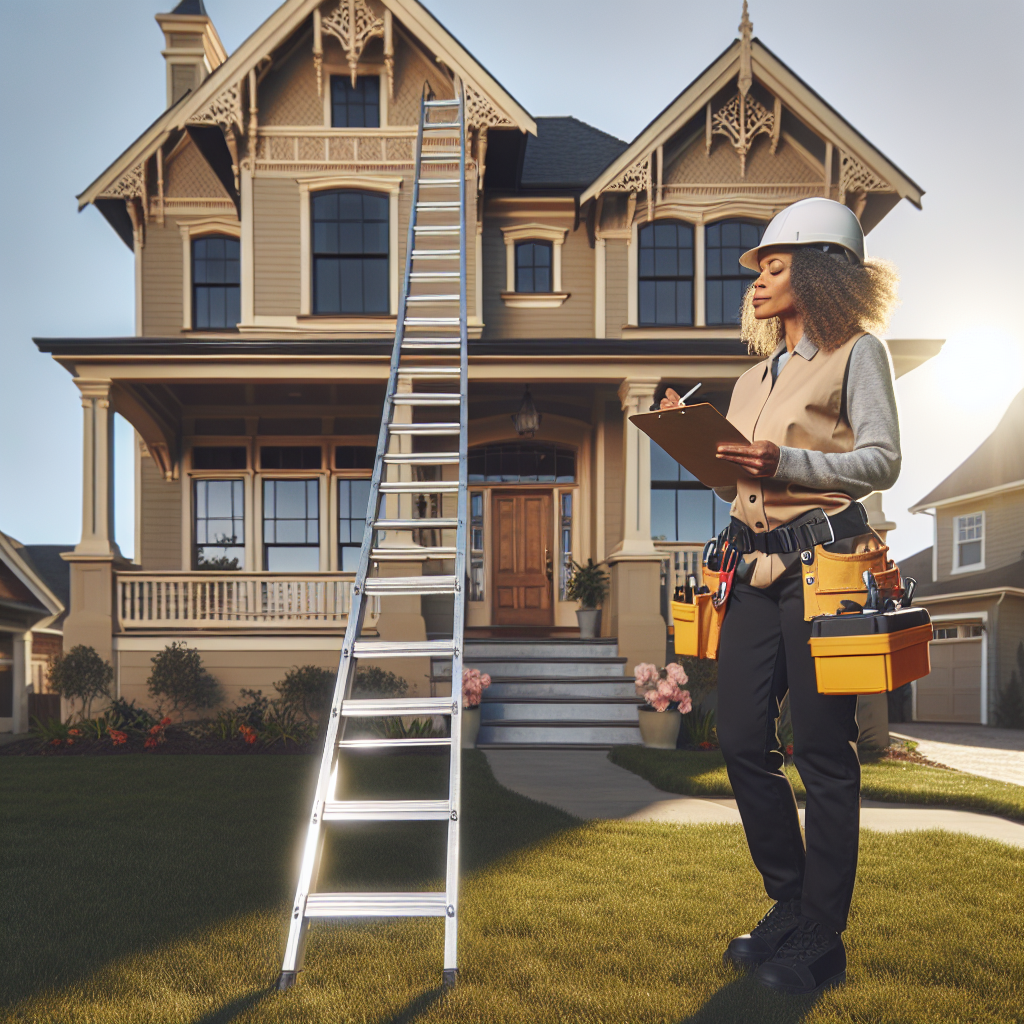
Ladders are an essential tool for conducting home inspections, allowing inspectors to access hard-to-reach areas and perform thorough assessments. However, it is crucial to recognize the importance of regular maintenance and inspection of these ladders to ensure their safe and effective use.
Firstly, regular maintenance is necessary to prevent accidents and injuries during inspections. Over time, ladders can develop wear and tear due to constant use or exposure to harsh weather conditions. Cracked rungs or damaged hinges can compromise the ladder’s stability, making it unsafe for use. Therefore, inspecting ladders periodically allows inspectors to identify any signs of deterioration and take prompt action before accidents occur.
Furthermore, maintaining ladders in good condition also contributes to their longevity. By addressing minor issues promptly through routine inspections, potential major problems can be prevented in the future. This not only saves money by avoiding costly repairs but also ensures that inspectors have a reliable tool at their disposal whenever needed.
To carry out effective ladder inspections, inspectors must familiarize themselves with industry standards and guidelines regarding ladder safety. The American National Standards Institute (ANSI) provides comprehensive criteria for ladder design, construction materials, load capacities, duty ratings, labeling requirements,and safe usage practices. Adhering to these standards helps ensure that all aspects of ladder safety are considered during the inspection process.
One important aspect of ladder maintenance often overlooked is proper storage when not in use. Storing ladders in a controlled environment away from extreme temperatures or moisture helps prevent corrosion and other forms of damage caused by unfavorable conditions.For example,a wooden ladder stored outdoors may experience warping or rotting due to exposure to rain or direct sunlight.Hence,storing ladders indoors,in a dry area,is vital for their preservation.In addition,ladder storage should include secure fastening mechanisms,such as brackets or hooks,to prevent accidental falls.Stored improperly,ladders may topple over,resulting in potential injuries.Nevertheless,it is worth mentioning that different types of ladders may have specific storage requirements.In such cases,referring to the manufacturer’s recommendations is crucial to ensure proper storage and prolong the lifespan of the ladder.
Lastly,a logbook detailing inspection dates and findings should be maintained as part of a comprehensive ladder maintenance program.This allows inspectors to track the history of each ladder,including any repairs or modifications performed.Regularly reviewing this logbook can help identify patterns or recurring issues that need attention.It also provides evidence for compliance with safety regulations in case inspections are audited by regulatory authorities.Additionally,ladder users should receive adequate training on safe ladder usage practices and must follow these guidelines rigorously.Failure to do so increases the risk of accidents and injuries during home inspections.
In conclusion,the importance of regular maintenance and inspection of ladders used in home inspections cannot be emphasized enough. Through routine assessments, potential risks can be identified and mitigated before accidents occur. Adhering to industry standards,such as those set by ANSI,and implementing proper storage measures further contributes to their preservation. By maintaining an organized record-keeping system,it becomes easier to monitor each ladder’s history,promote compliance with safety regulations,and make informed decisions regarding repair or replacement.Finally,user education plays a pivotal role in ensuring safe ladder usage during home inspections.Through these collective efforts,inspectors can continue scaling new heights while prioritizing safety.
How to Choose the Right Size and Weight Capacity for Your Home Inspection Ladder
Home inspections are a crucial part of the home buying process. They provide potential buyers with an in-depth assessment of a property’s condition, ensuring that they have all the necessary information to make an informed decision. One essential tool for conducting thorough home inspections is a ladder.
Choosing the right size and weight capacity for your home inspection ladder is paramount. It not only ensures your safety but also allows you to access hard-to-reach areas effectively. In this article, we will explore various factors that need to be considered when selecting the appropriate ladder for your home inspection needs.
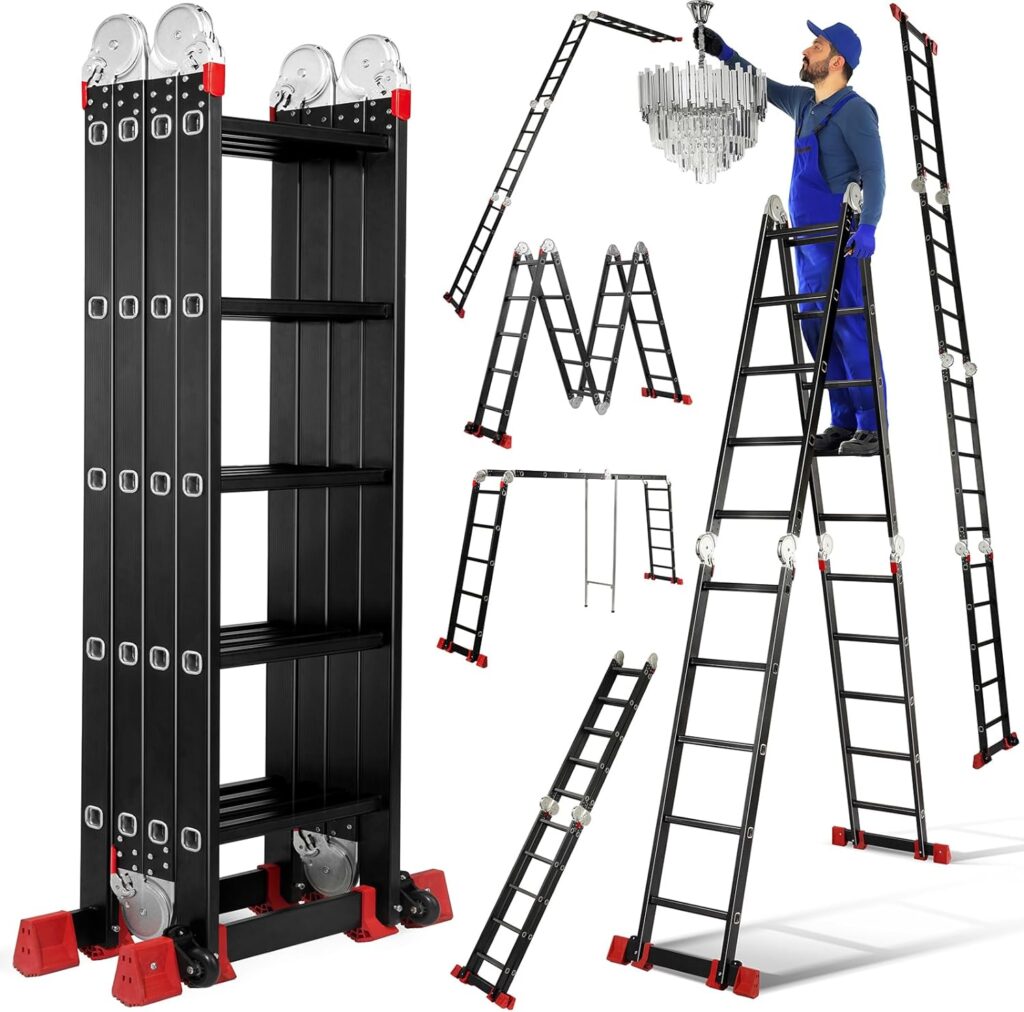
Firstly, it is important to determine the height requirements of your specific inspection tasks. Measure the maximum distance from the ground level to where you need to reach comfortably during inspections. This measurement will help determine whether you require a step stool, stepladder, or extension ladder.
For tasks that involve reaching heights up to 8 feet or less, a step stool or stepladder can be sufficient. These ladders typically have two or three steps and offer stable footing for shorter climbs within confined spaces such as attics or closets.
On the other hand, if you anticipate needing access beyond 8 feet in height, an extension ladder becomes necessary. Extension ladders are designed with telescoping sections that allow them to extend well beyond their compacted length when needed while remaining highly portable and easy to transport between job sites.
The next consideration is weight capacity – how much load can your chosen ladder safely support? To ascertain this factor accurately, add up your bodyweight along with any tools or equipment you may carry during inspections; then select a ladder rated above this total weight.
Ladder manufacturers provide detailed specifications regarding their products’ maximum weight capacities on product labels and user manuals – consult these guidelines diligently before making any decisions regarding which model suits your needs best.
It’s also worth noting that there are different types of ladders available on the market, each with its own unique features. Fiberglass ladders are generally recommended for home inspections due to their superior durability and resistance to electrical conductivity.
Aluminum ladders, while lighter and more affordable, should be used with caution when inspecting areas near power lines or live circuits. These metal ladders conduct electricity and may pose a significant safety risk if proper precautions aren’t taken.
Another important aspect to consider is ladder stability. Look for features like non-slip rungs and rubberized feet that provide optimal traction on various surfaces. Also, ensure that the ladder you choose meets industry safety standards such as those set by OSHA (Occupational Safety and Health Administration).
Lastly, when choosing a ladder for home inspections, it’s prudent to invest in one that can easily fit into your vehicle or storage space. Consider the ladder’s weight and size when compacted – this will greatly impact its portability.
In conclusion, selecting the right size and weight capacity for your home inspection ladder is vital to ensure both your safety and efficiency during inspections. Assessing height requirements accurately enables you to determine whether a step stool, stepladder, or extension ladder is needed.
Additionally, paying attention to weight capacity ensures that the ladder can safely support your bodyweight along with any tools or equipment you carry during inspections. Consideration of material type – fiberglass versus aluminum – helps safeguard against potential electrical hazards.
Remember also to prioritize stability by choosing a ladder with non-slip rungs and rubberized feet while adhering strictly to industry safety standards outlined by regulatory bodies such as OSHA.
Ultimately, taking all these factors into account will help you make an informed decision about which ladder best suits your specific needs so you can confidently scale new heights in conducting comprehensive home inspections.
Enhancing Efficiency: Tools and Accessories that Complement the Use of Ladders in Home Inspections
Home inspections play a crucial role in identifying potential issues and ensuring the safety and functionality of residential properties. To conduct thorough home inspections, professionals need to have access to various tools and accessories that can complement the use of ladders. These tools not only enhance efficiency but also enable inspectors to scale new heights and effectively examine every nook and cranny.
One such tool is a high-quality flashlight that enables inspectors to illuminate dark areas or corners during their inspection process. With the help of a reliable flashlight, they can easily spot hidden defects or damages that may not be visible under normal lighting conditions. Additionally, flashlights with adjustable beams offer versatility, allowing inspectors to focus on specific areas for detailed examination.
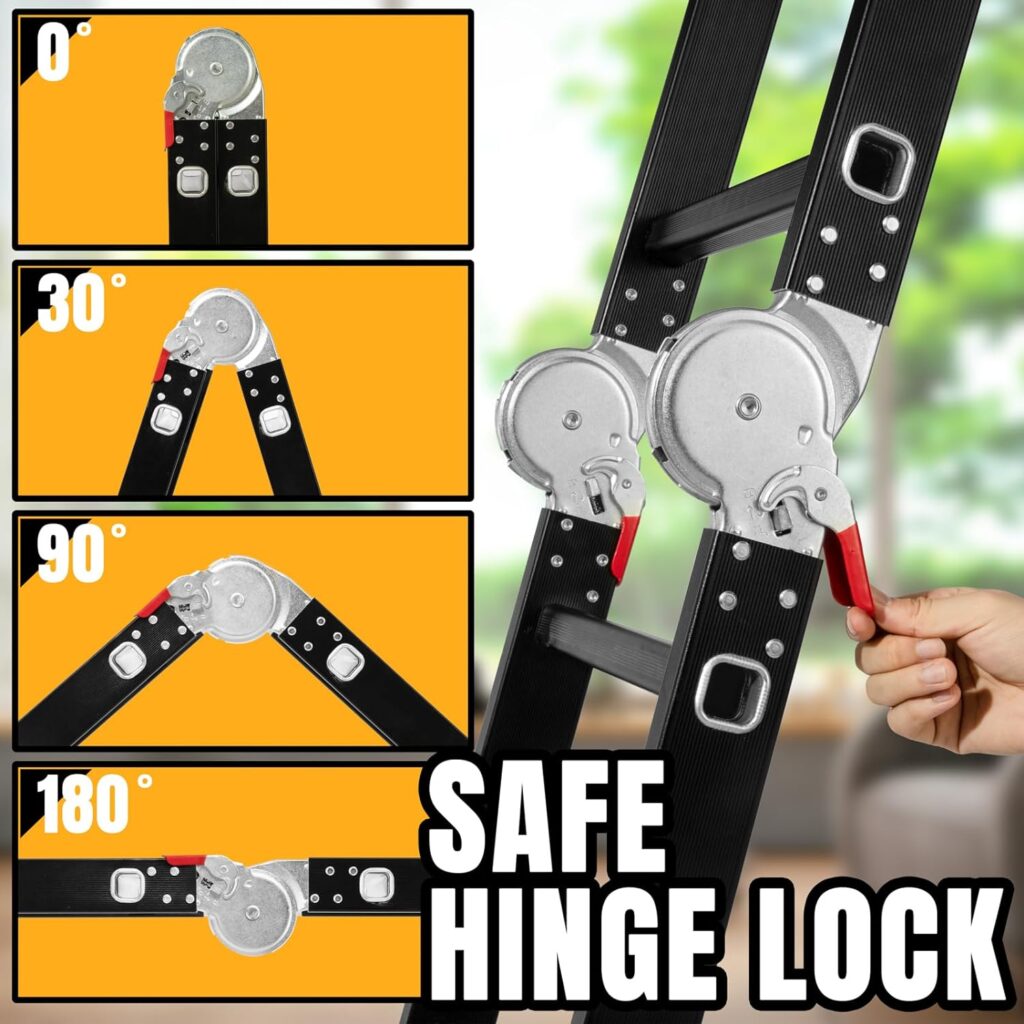
Another indispensable tool is a digital camera which enables inspectors to capture visual evidence of any deficiencies discovered during the inspection process. Photographs provide vital documentation for both the inspector and homeowners alike as they serve as clear evidence of existing problems or improvements needed within the property.
Furthermore, moisture meters are essential tools for inspecting buildings prone to water damage or leakage issues. By using these handheld devices, inspectors can identify hidden moisture levels within walls, floors, or ceilings. This knowledge allows them to detect potential mold growth or structural damage caused by excessive moisture before it becomes more severe.
To efficiently reach elevated areas in homes such as roofs or attics where important components like insulation or ventilation systems are located, utilizing ladder accessories becomes imperative. Ladder stabilizers provide added stability when working on uneven surfaces while ladder standoff brackets create space between walls and ladders preventing any accidental damage during inspections.
For enhanced convenience during home inspections involving electrical systems, voltage testers come into play. These handheld devices enable professionals to determine if an electric circuit is live without having direct contact with it—ensuring safety while assessing electrical installations thoroughly.
Notably beneficial for reaching high points like ceiling fixtures without requiring unstable step stools are telescoping extension poles equipped with versatile attachments such as mirrors or magnets. These attachments allow inspectors to access hard-to-reach areas effortlessly, ensuring a comprehensive evaluation of the property.
When conducting inspections in older or historic buildings, thermographic cameras prove particularly useful. These specialized cameras detect variations in surface temperature, which can indicate hidden problems like insulation deficiencies or electrical issues. By pinpointing such anomalies, inspectors can recommend appropriate measures for remediation or further investigation.
To protect flooring surfaces during the inspection process and prevent any accidental damage caused by ladder movement, floor protection sheets are employed. These sheets act as barriers between ladders and delicate surfaces like hardwood floors, tiles, or carpets—ensuring that properties remain intact and undamaged during inspections.
In conclusion, home inspections demand efficiency and thoroughness in order to provide accurate assessments of residential properties. With the aid of various tools and accessories that complement ladder use in these inspections, professionals can scale new heights both literally and metaphorically—enhancing their ability to identify potential issues while ensuring safety standards are met. From flashlights to digital cameras, moisture meters to voltage testers—the arsenal of tools available enables inspectors to conduct detailed evaluations while protecting themselves and the homes they inspect.
Overcoming Common Challenges Encountered when Utilizing Ladders for Home Inspections
When it comes to conducting thorough home inspections, ladders play a crucial role in allowing inspectors to access hard-to-reach areas. However, the utilization of ladders also presents various challenges that must be overcome in order to ensure safety and effectiveness. In this article, we will explore some common obstacles encountered when utilizing ladders for home inspections and discuss strategies for overcoming them.
One of the primary challenges faced by home inspectors is the potential instability of ladders. Uneven surfaces or unstable ground can cause ladders to wobble or even topple over, putting the inspector at risk of injury. To address this challenge, it is essential to select a ladder that is appropriate for the task at hand. A sturdy extension ladder with adjustable legs can provide stability on uneven terrain, while a stepladder may be more suitable for indoor inspections where stability is less likely to be compromised.
Another hurdle faced by inspectors when using ladders is maneuvering through narrow spaces or around obstacles within homes. Tight stairwells or cramped attics can make it difficult to position and adjust a ladder properly. In such cases, collapsible ladders or those with adjustable widths may offer a solution by providing flexibility in navigating confined spaces.
Furthermore, accessing high areas such as roofs poses its own set of challenges during home inspections. Safety concerns arise not only from the height but also from potential hazards like loose tiles or slippery surfaces due to weather conditions. It is crucial for inspectors to prioritize their safety by wearing appropriate footwear with good grip and using harnesses if necessary.
In addition to these physical obstacles, another challenge often encountered when utilizing ladders for home inspections relates to time management and efficiency. Climbing up and down multiple times during an inspection consumes valuable time that could otherwise be spent thoroughly examining different aspects of the property. To tackle this issue effectively, proper planning becomes paramount: strategically organizing tasks based on their location and accessibility can help streamline the inspection process, minimizing ladder usage when unnecessary.
Moreover, inspectors must also be mindful of the weight capacity of ladders. Carrying heavy equipment or tools while climbing a ladder could exceed its maximum load limit, leading to accidents or structural damage. By choosing a ladder with an appropriate weight capacity and being diligent in distributing weight evenly while ascending, home inspectors can mitigate this risk effectively.
Finally, weather conditions pose significant challenges when utilizing ladders for home inspections. Windy days can make it difficult to maintain balance on a ladder while rain or snow may create slippery surfaces. Inspectors should always check weather forecasts prior to commencing any outdoor inspections involving ladders and reschedule if conditions are unfavorable. Additionally, inspecting areas adjacent to potential water entry points before ascending will enable them to identify any hazards beforehand.
In conclusion, while utilizing ladders for home inspections is essential for thorough assessments of properties, there are several common challenges that must be addressed to ensure safety and efficiency. By selecting appropriate ladders suitable for the task at hand, maneuvering through narrow spaces or obstacles becomes easier. Implementing proper planning techniques helps manage time efficiently during inspections and mitigates unnecessary ladder usage. Considering factors such as weight capacity and weather conditions further enhances safety protocols during the inspection process. With careful consideration of these challenges and proactive strategies in place, home inspectors can confidently scale new heights in conducting comprehensive examinations without compromising their well-being or the integrity of the property under scrutiny
Best Practices for Ensuring Accurate Observations while Conducting a Residential Inspection with a ladder
Home inspection is a crucial step in the process of buying or selling a property. It allows potential buyers to identify any underlying issues and make informed decisions. To conduct a thorough inspection, inspectors often need to reach high areas that are not easily accessible from the ground. This is where ladders come into play, enabling inspectors to scale new heights and ensure accurate observations.
When it comes to using ladders for home inspections, there are several best practices that should be followed. These practices help maintain safety standards while also facilitating effective inspections. One important aspect is selecting the right ladder for the job at hand.
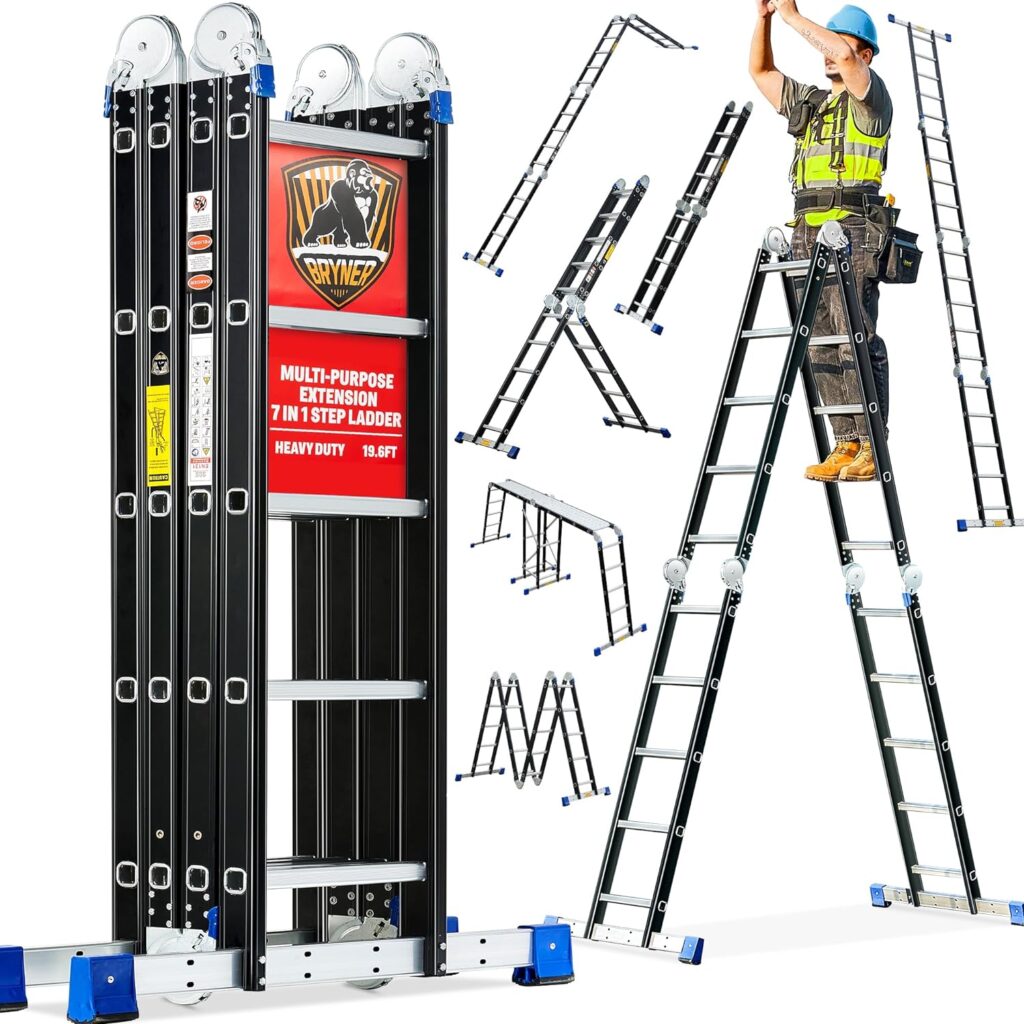
The choice of ladder depends on various factors such as the height of the area to be accessed, weight capacity requirements, and ease of maneuverability. Inspectors must assess these factors before selecting an appropriate ladder for each specific task. A sturdy and well-maintained ladder will not only enhance safety but also improve overall efficiency during inspections.
Furthermore, proper positioning of ladders plays a vital role in ensuring accurate observations during residential inspections. Before climbing up a ladder, inspectors should carefully consider its placement against the structure being examined. The angle at which the ladder leans against the wall or other support should be neither too steep nor too shallow.
Maintaining three points of contact with both hands and one foot on each rung provides stability while ascending or descending a ladder safely. This technique reduces the risk of accidents caused by slips or falls due to unstable footing.
In addition to position and stability, it is essential for home inspectors to observe certain safety precautions while utilizing ladders during residential inspections. Inspectors must always wear appropriate personal protective equipment (PPE) such as non-slip shoes, gloves, and helmets when working at elevated heights.
Inspectors should also inspect their ladders regularly for signs of damage or wear-and-tear before every use. Any defects found must be addressed promptly to avoid accidents. Additionally, it is important to set up warning signs or barricades when using ladders in public spaces to prevent unauthorized access and potential injuries.
Transitional Phrase: In order to ensure comprehensive inspections, another crucial aspect of ladder use involves maintaining a systematic approach while conducting observations.
Inspectors should start from the topmost area accessible with a ladder and gradually work their way down. This allows them to observe any defects or issues that may be present on the roof or upper sections of the property first. As they descend, inspectors can carefully examine each part of the structure methodically without missing any crucial details.
During this process, inspectors must document their findings accurately and comprehensively. Taking clear photographs and detailed notes will help provide a visual record of any observed deficiencies for future reference. This documentation serves as evidence during negotiations between buyers and sellers regarding repairs or adjustments needed before closing a deal.
To conclude, utilizing ladders for home inspections is an essential practice that enables inspectors to reach high areas safely and efficiently. By following best practices such as selecting the right ladder, positioning it correctly, practicing safety precautions, and maintaining a systematic approach while conducting observations, accurate assessments can be made during residential inspections.
These practices not only contribute to ensuring safety standards but also aid in documenting findings accurately for future reference. Inspectors play a vital role in helping buyers make informed decisions about their potential investment by providing thorough evaluations through careful utilization of ladders in residential inspections.In conclusion, utilizing ladders for home inspection provides a practical solution for scaling new heights. Ladders allow inspectors to access various areas of a home that may otherwise be inaccessible, ensuring a thorough examination. With advancements in ladder design and safety features, such as anti-slip surfaces and stabilizing mechanisms, they offer increased stability and security during inspections. Overall, incorporating ladders into the process of home inspection enables inspectors to effectively navigate different elevations and conduct comprehensive evaluations of properties.

